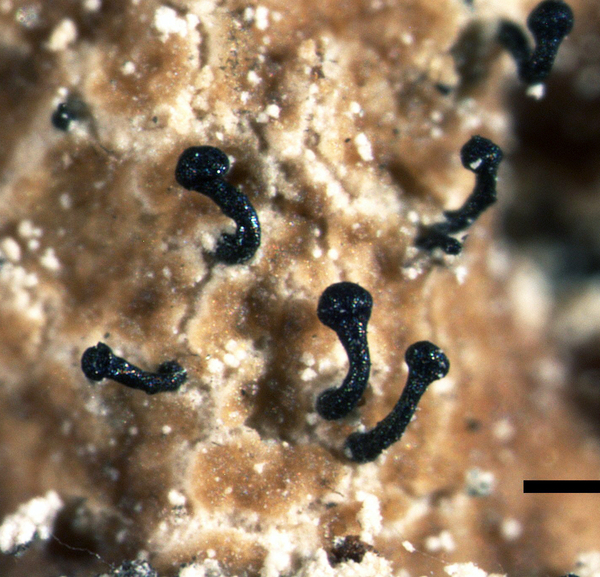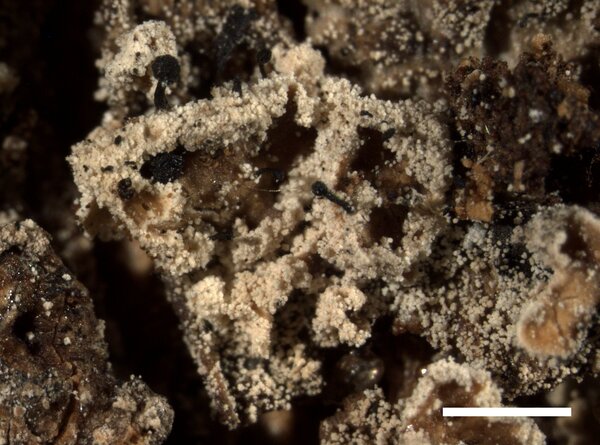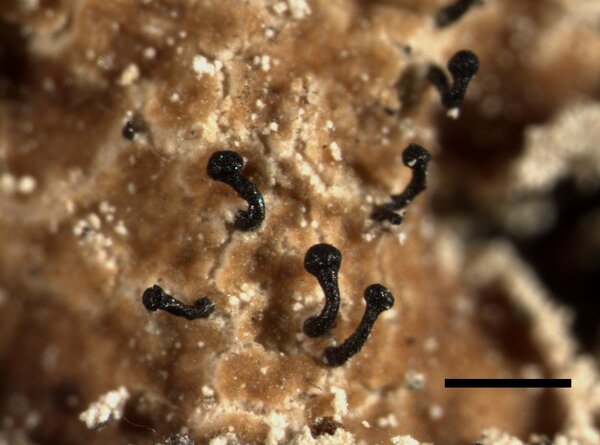Chaenothecopsis parasitaster (Bagl. & Carestia) D. Hawksw.
Notes R. Bot. Gard. Edinb., 36: 184, 1978. Basionym: Calicium pusillum var. parasitaster Bagl. & Carestia - Atti Soc. Crittogam. Ital. 2: 246, 1880,
Synonyms: Calicium parasitaster (Bagl. & Carestia) Zopf
Distribution: N - TAA (Puntillo & Puntillo 2009, Brackel 2016), Lomb (Jatta 1909-1911, Brackel 2016), Piem (Puntillo & Puntillo 2009, Brackel 2016).
Description: Thallus not evident, not lichenized, parasitic on squamules of Cladonia. Apothecia stalked, pin-like, (0.35-)0.5-0.7(-0.9) mm high, the stalk 0.04-0.075 mm thick, black or rarely pale greenish, brownish or grey in lower part, always darker in upper part, the central part formed by pale, in lower part intricately interwoven, in upper part periclinally arranged hyphae, the outer part green-brown to greenish, formed by periclinally arranged, sclerotized hyphae. Capitulum lenticular, (0.12-)0.2-0.3 mm across, black or sometimes faintly white pruinose in upper part; mazaedium absent. Exciple of greenish to brown, periclinally arranged hyphae. Epithecium thin, reddish brown; hypothecium pale or greenish brown. Asci 8-spored, cylindrical, with a thickened apex penetrated by a narrow canal, formed singly, persisting until the spores are mature. Ascospores 1-septate, medium brown, ellipsoid, (5-)6-10(-14) x 2-3(-3.5) µm, with a minutely warted wall. Photobiont absent. Spot tests: all parts of ascocarps K-, C-, KC-, P-, N-. Chemistry: no lichen substances, except unidentified greenish or brownish pigments. Note: this taxon, frequently synonymised with Ch. pusilla, seems to be a distinct species (see Groner 2010), which is strictly parasitic on species of Cladonia. Rare in the Alps.
Growth form: Lichenicolous fungus
Substrata: bark, lignum, soil, terricolous mosses, and plant debris
Reproductive strategy: mainly sexual
In underhangs rarely wetted by rain
paras Cladonia spp.
Commonnes-rarity: (info)
Alpine belt: absent
Subalpine belt: rare
Oromediterranean belt: absent
Montane belt: very rare
Submediterranean belt: extremely rare
Padanian area: absent
Humid submediterranean belt: very rare
Humid mediterranean belt: absent
Dry mediterranean belt: absent
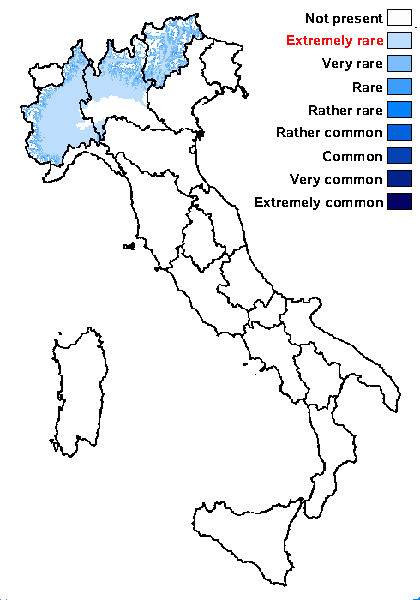
Predictive model
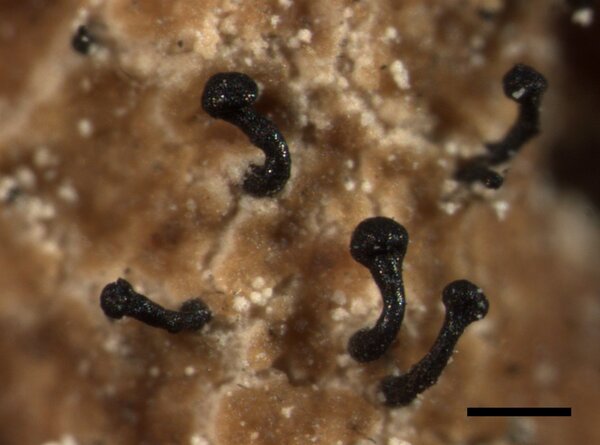

Elena Pittao; Owner: Derpartment of Life Sciences, University of Trieste CC BY-SA 4.0
Herbarium: TSB (9207)
02/02/2017
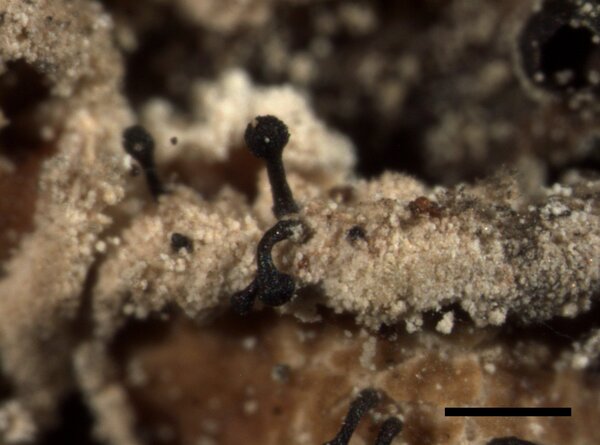

Elena Pittao; Owner: Derpartment of Life Sciences, University of Trieste CC BY-SA 4.0
Herbarium: TSB (9207)
02/02/2017
Growth form: Lichenicolous fungus
Substrata: bark, lignum, soil, terricolous mosses, and plant debris
Reproductive strategy: mainly sexual
In underhangs rarely wetted by rain
paras Cladonia spp.
Commonnes-rarity: (info)
Alpine belt: absent
Subalpine belt: rare
Oromediterranean belt: absent
Montane belt: very rare
Submediterranean belt: extremely rare
Padanian area: absent
Humid submediterranean belt: very rare
Humid mediterranean belt: absent
Dry mediterranean belt: absent

Predictive model


Elena Pittao; Owner: Derpartment of Life Sciences, University of Trieste CC BY-SA 4.0
Herbarium: TSB (9207)
02/02/2017


 INDEX FUNGORUM
INDEX FUNGORUM
 GBIF
GBIF
 DOLICHENS
DOLICHENS
